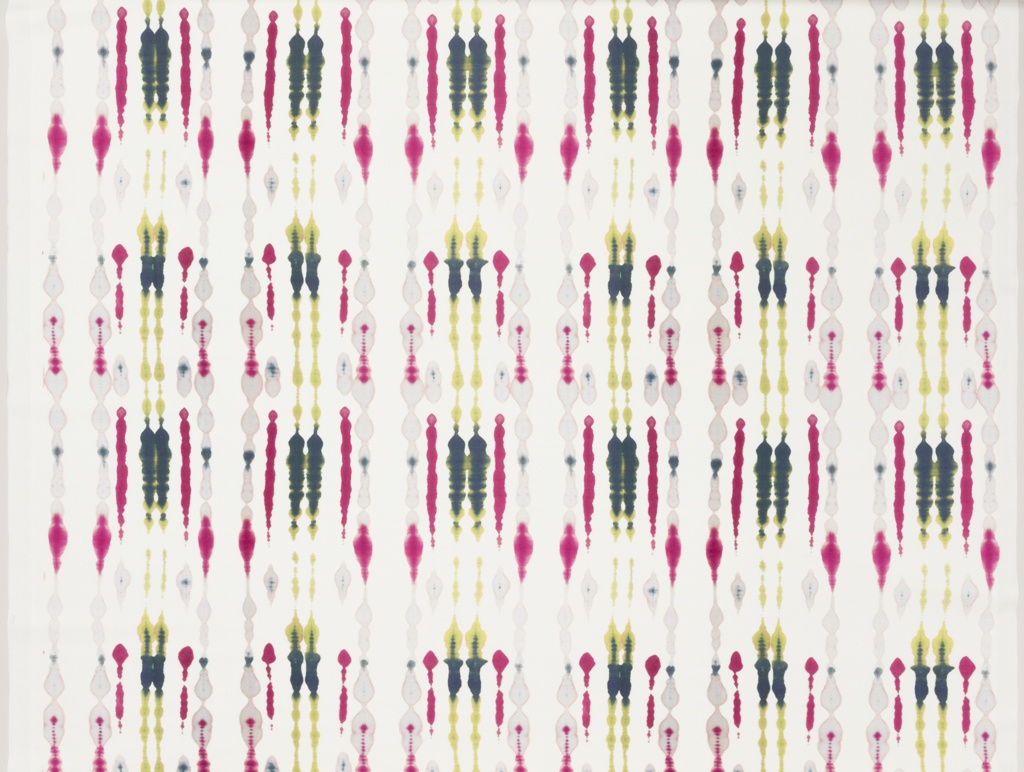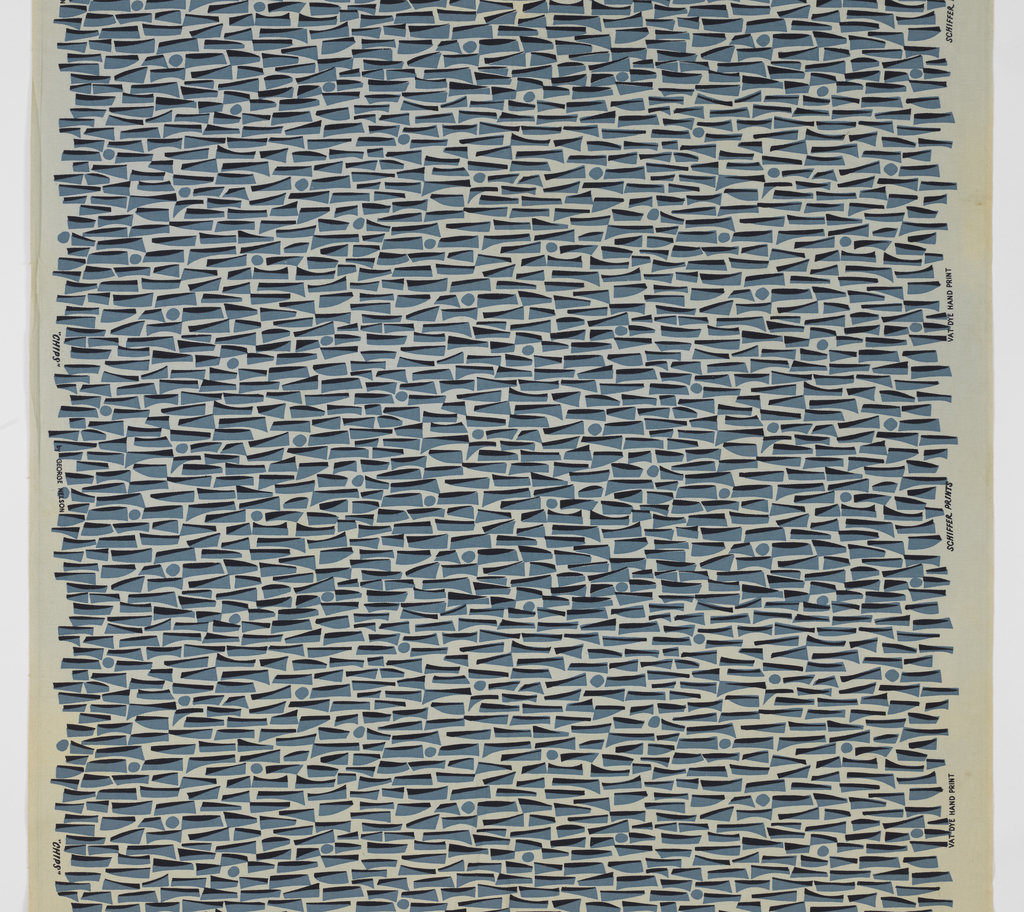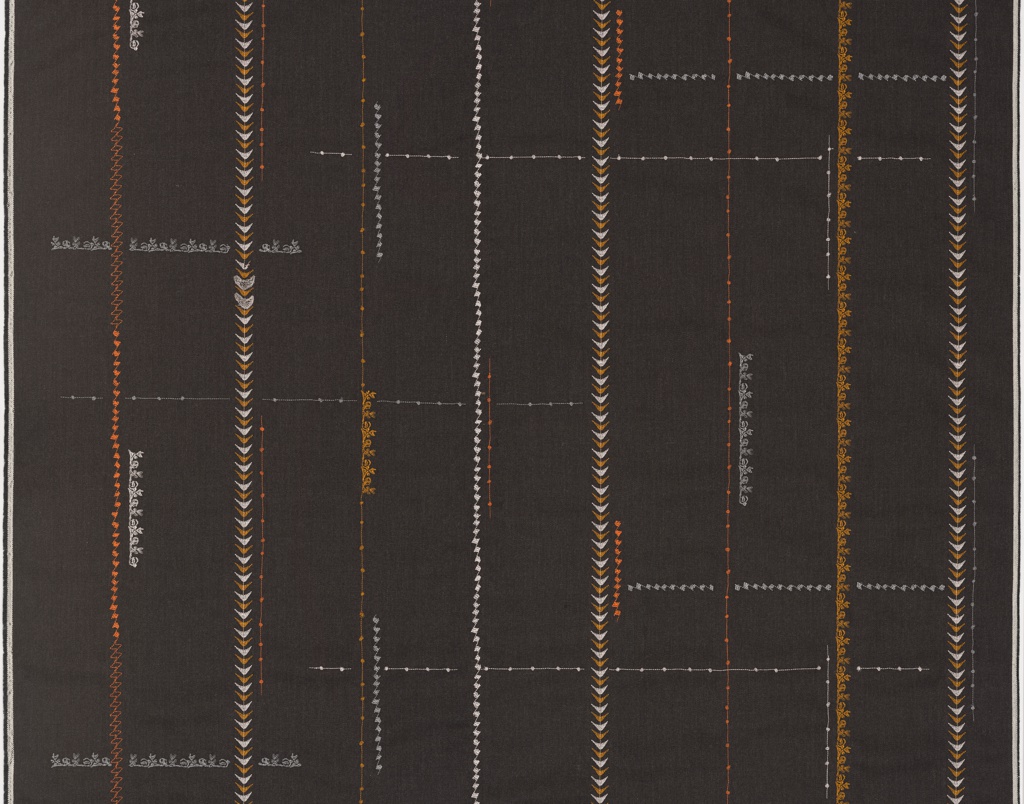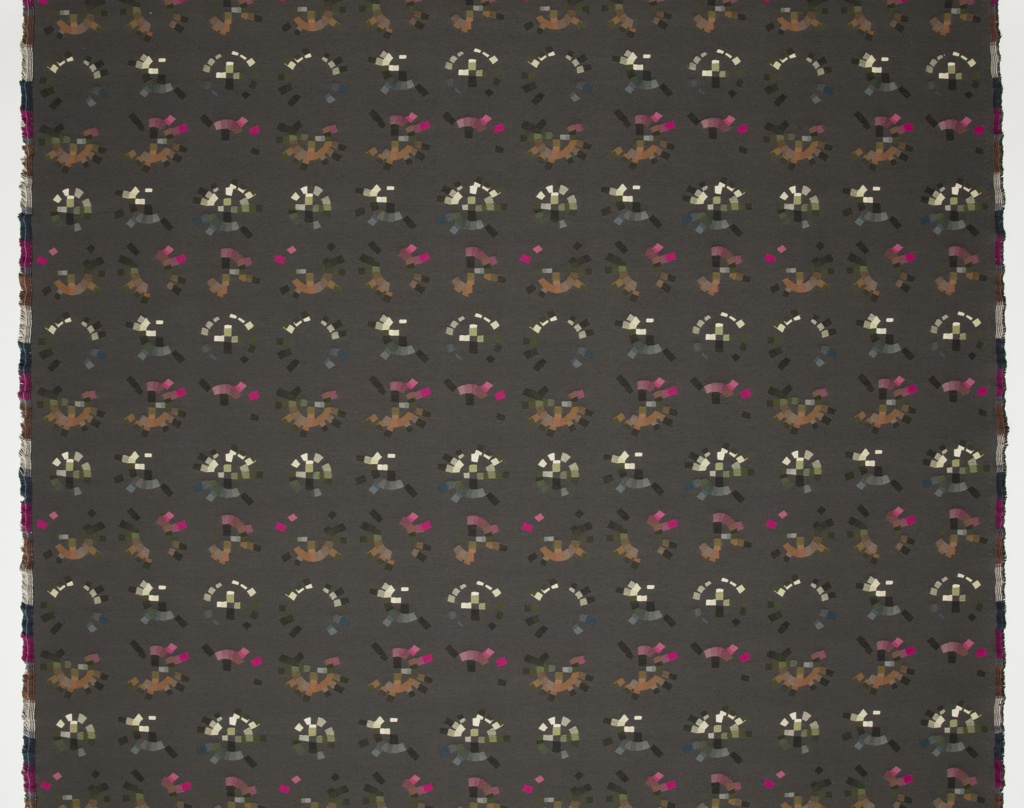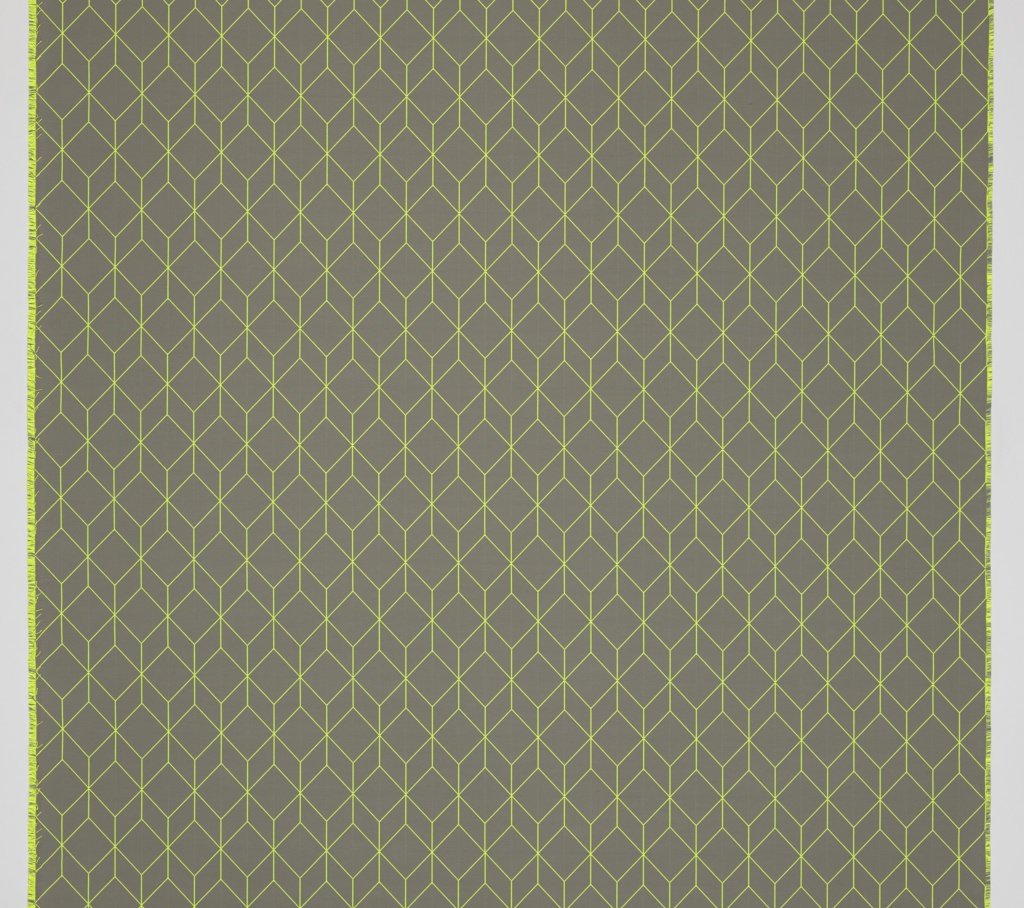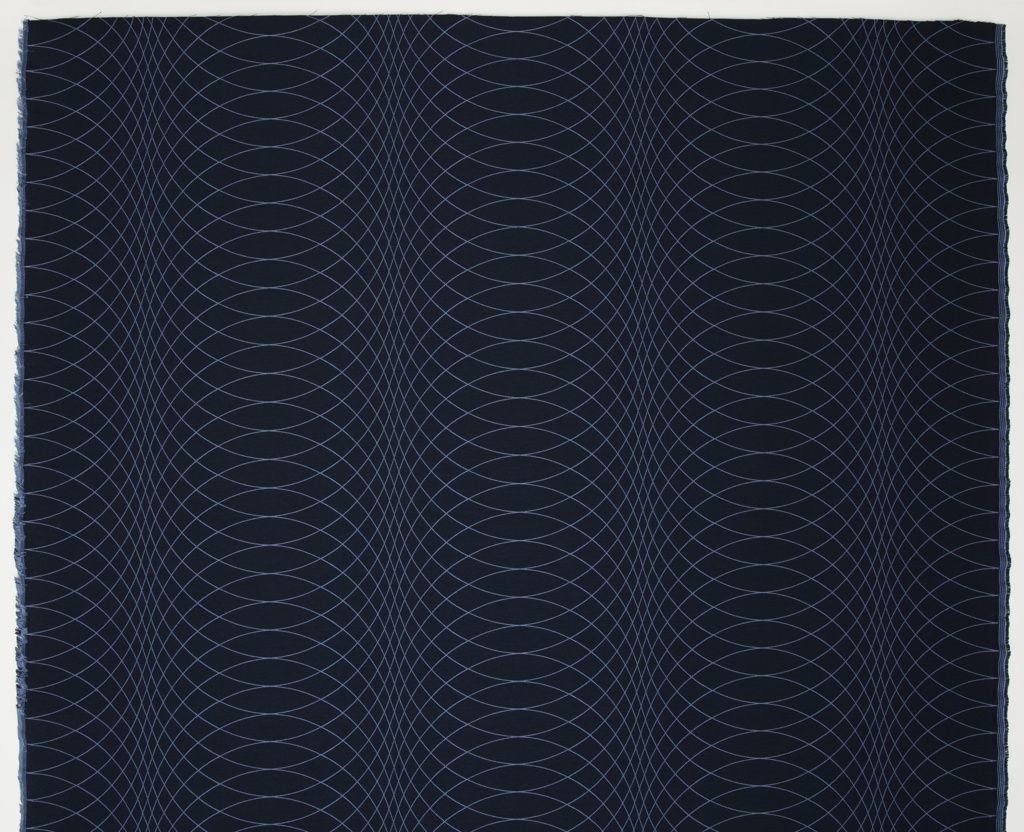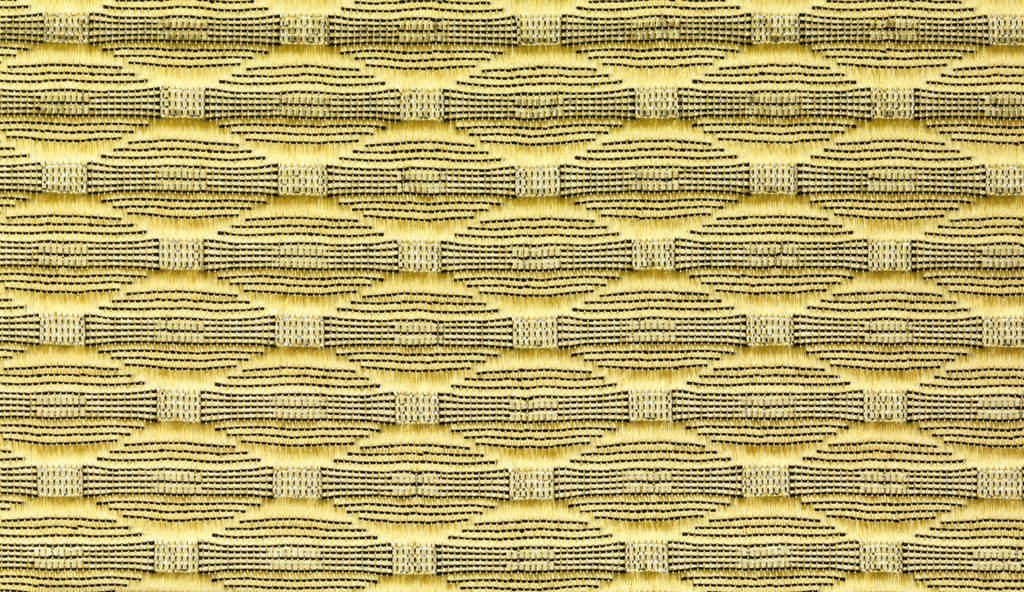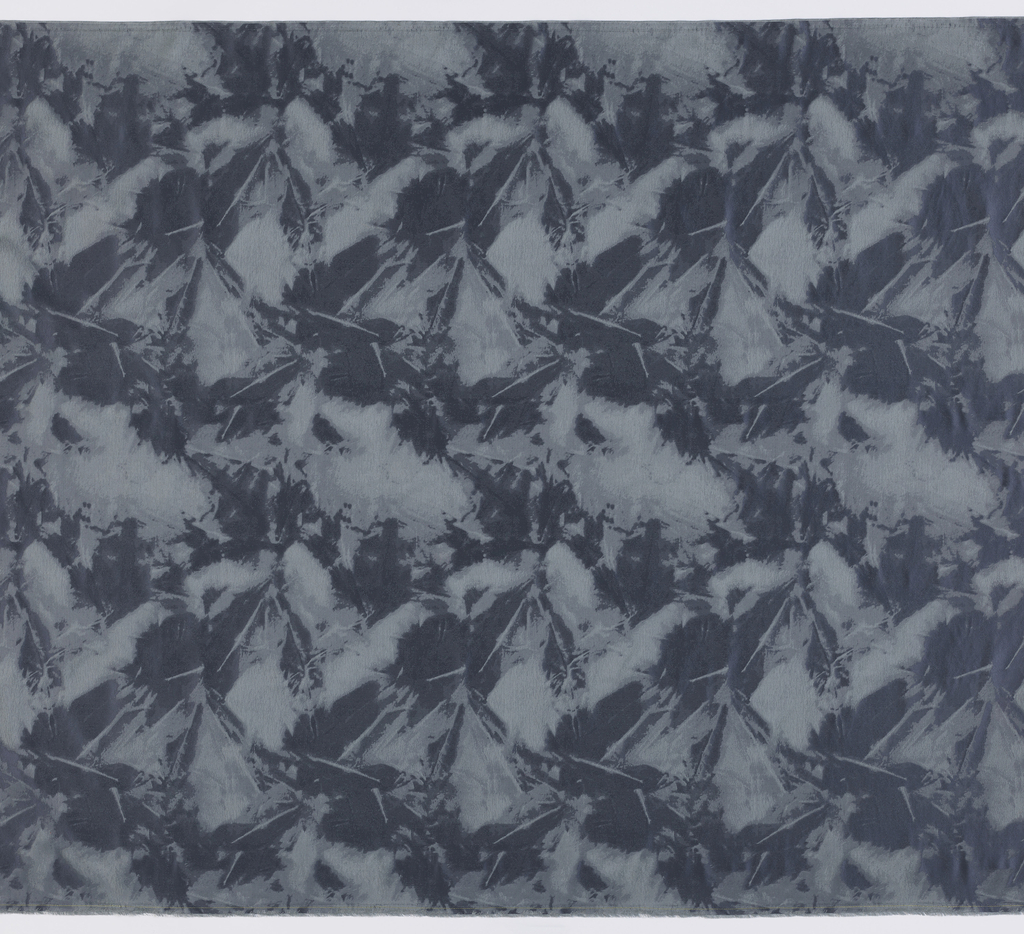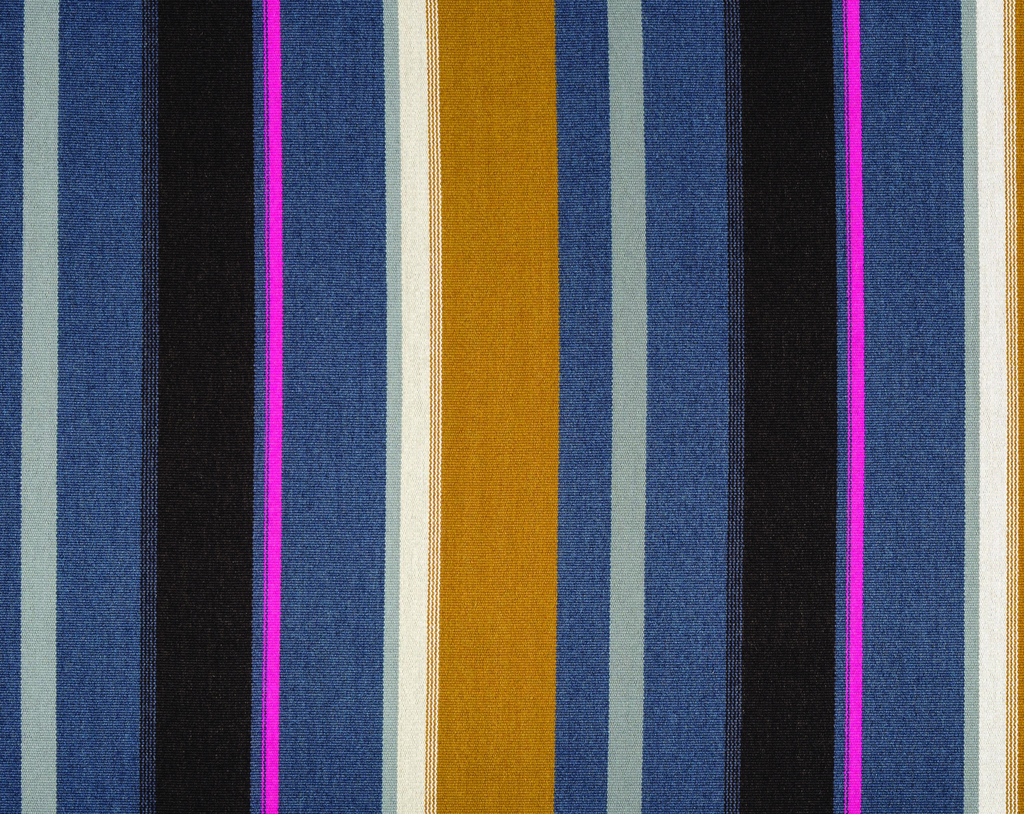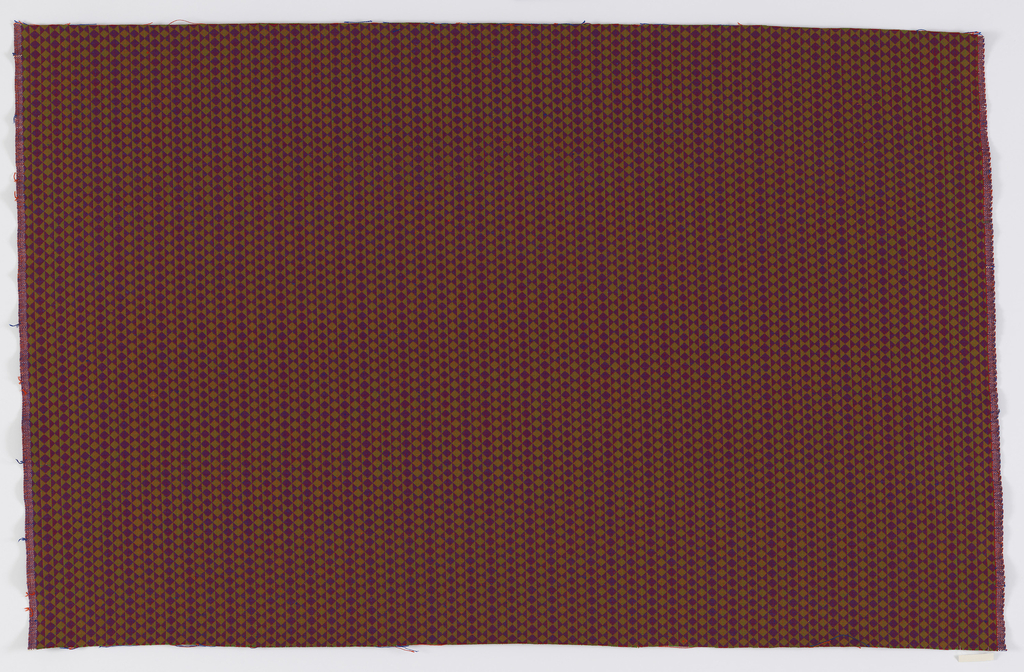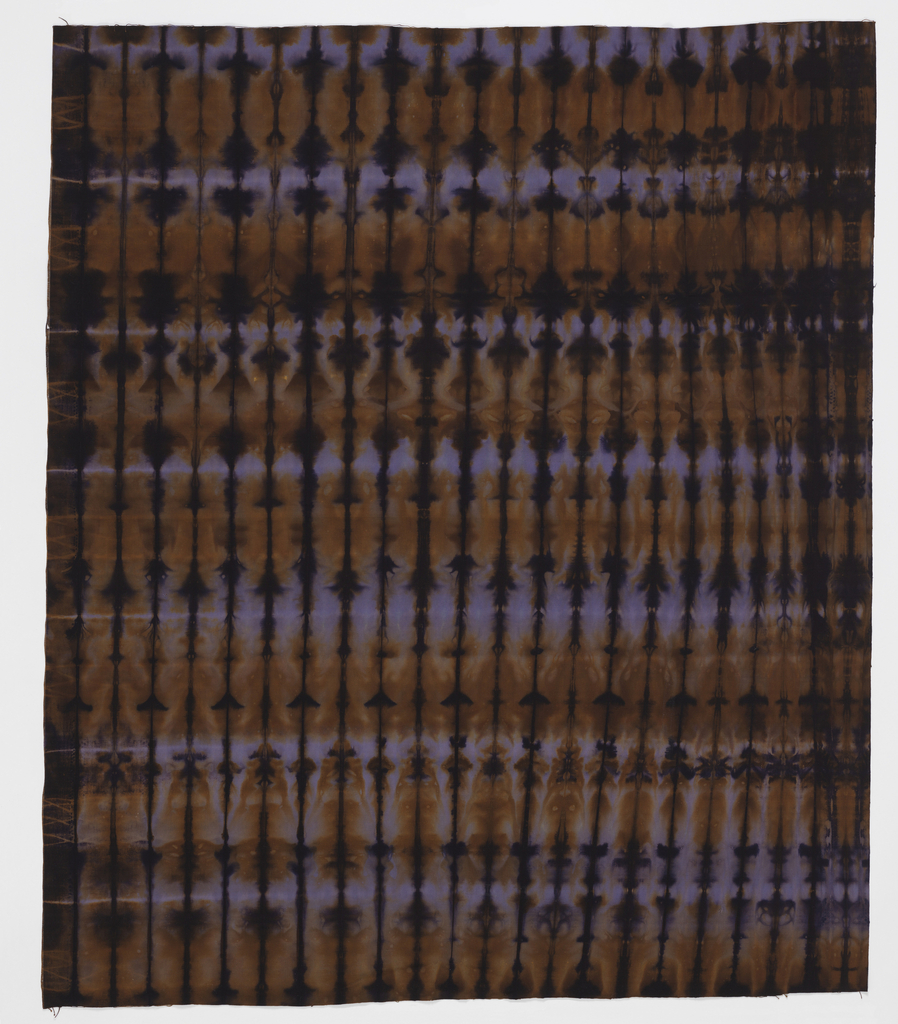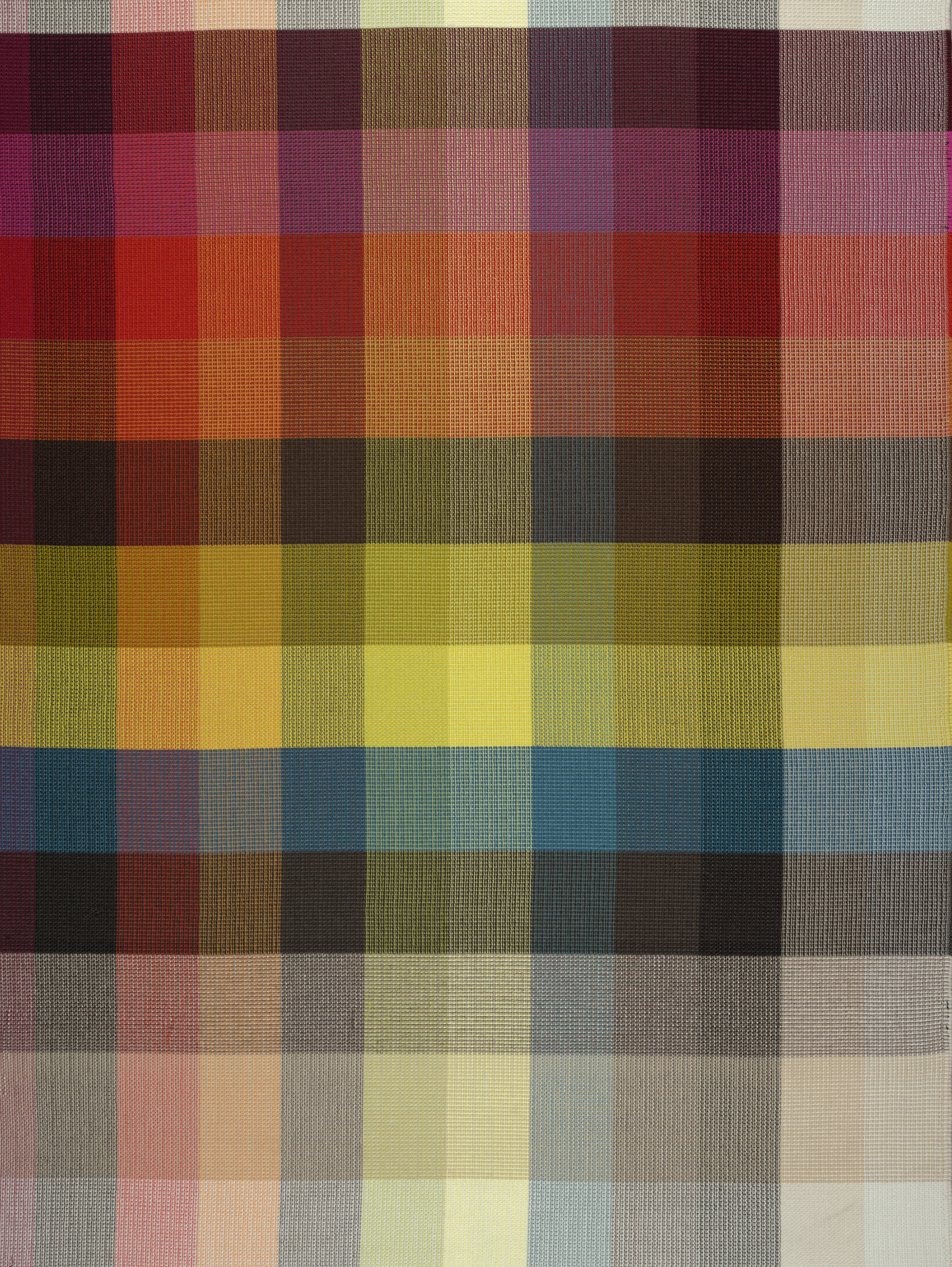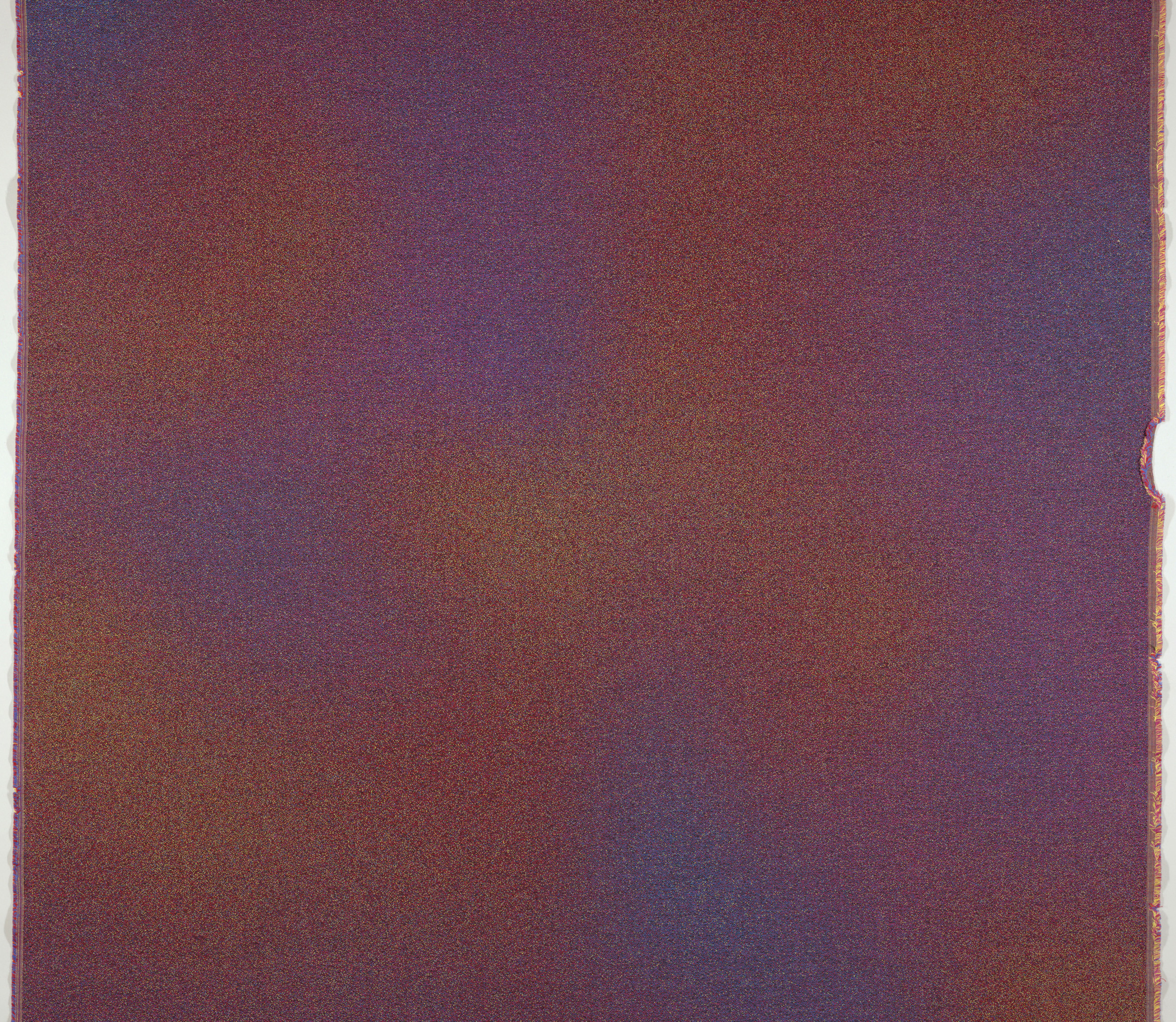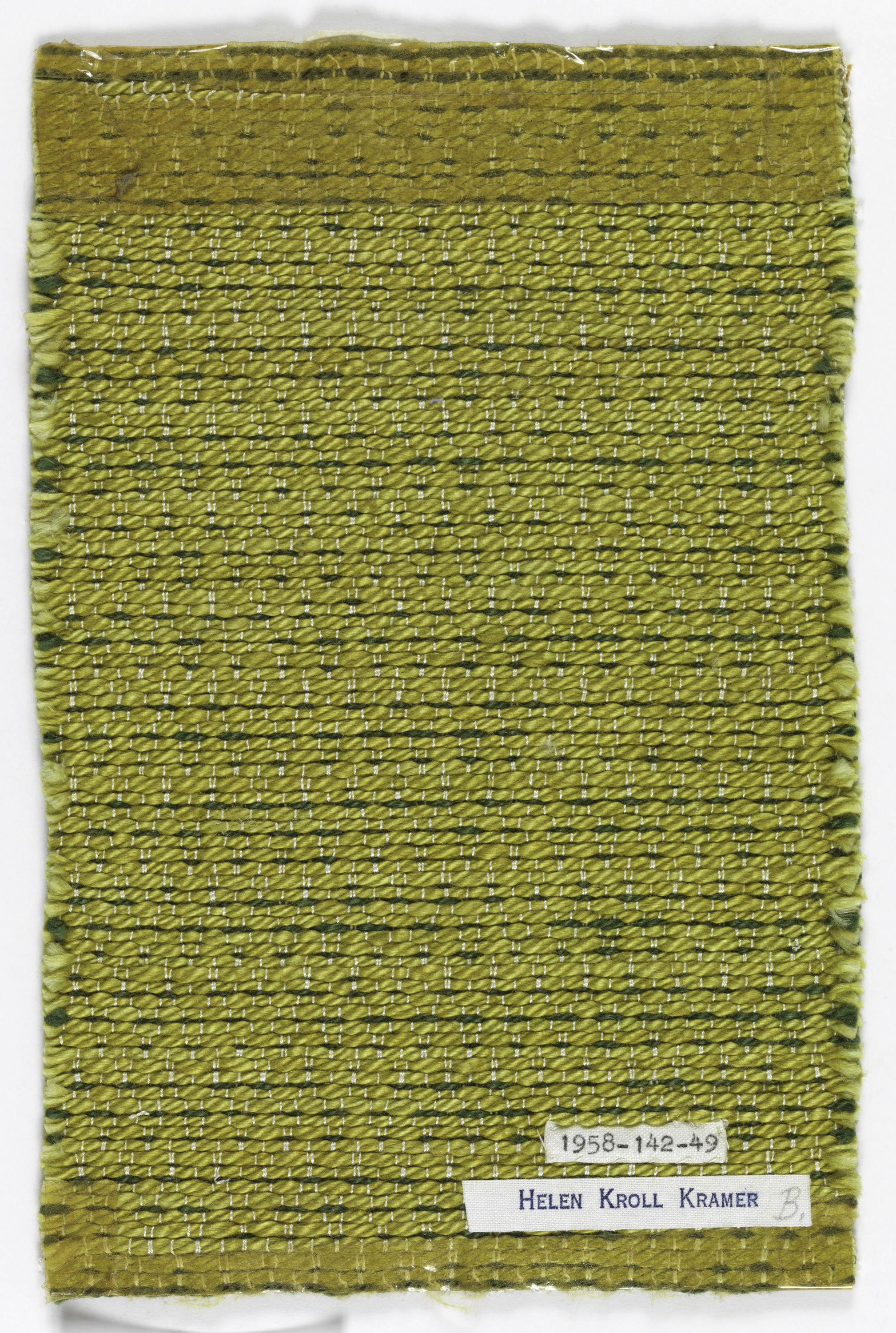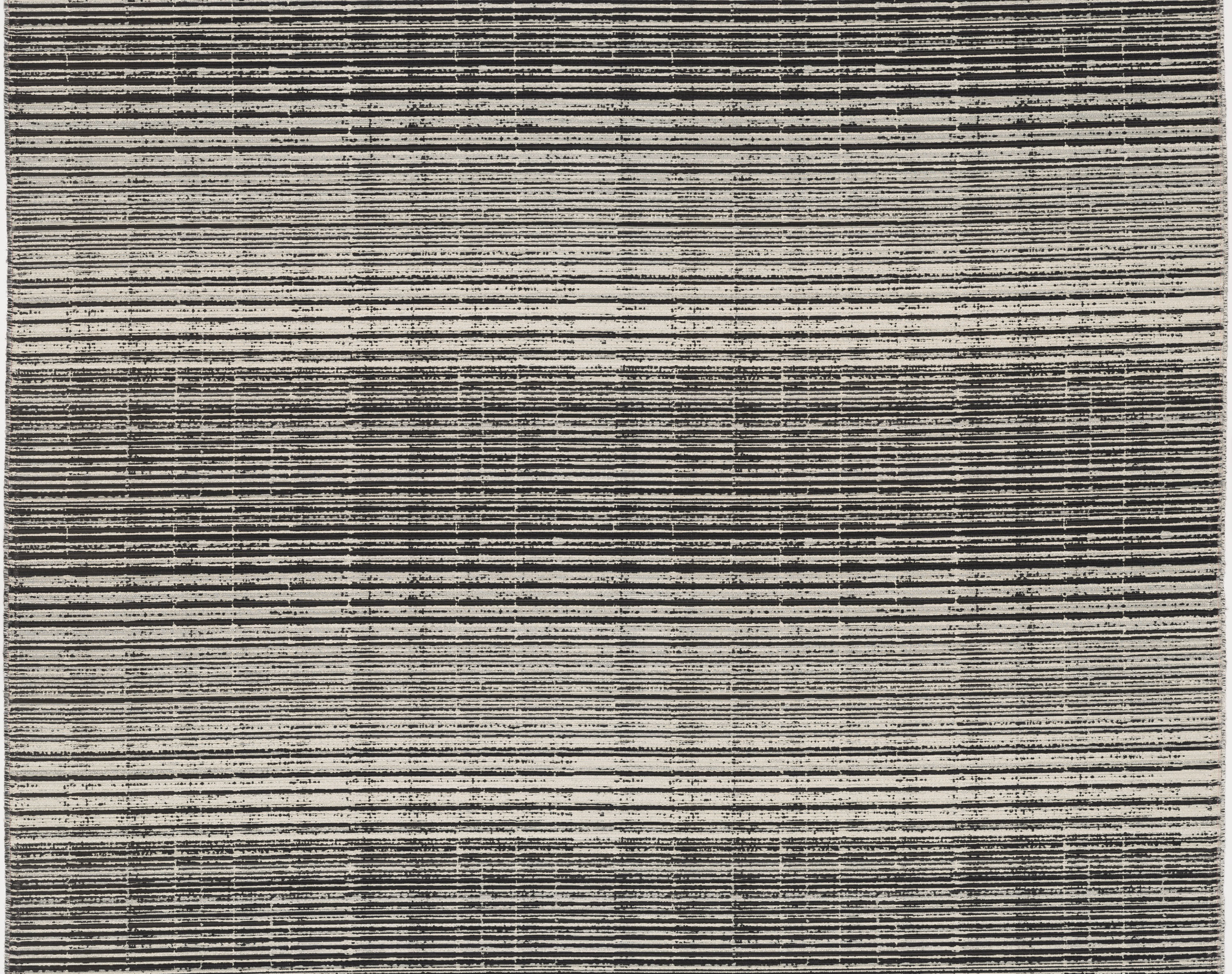One of the greatest challenges in designing commercial textiles has been creating durable, cleanable, affordable, and aesthetically pleasing fabrics for highly trafficked and 24/7 environments like healthcare facilities, theaters and airports. In addition, there is more demand for textiles with sustainable manufacturing practices, and companies like Designtex are taking on this responsibility and producing some...
In the aftermath of World War II, a number of textile producers attempted to revitalize the industry by enlisting recognized personalities in art and architecture to design screen prints. “Perhaps the most outstanding name collection is Stimulus Fabrics produced by Schiffer Prints,” Alvin Lustig wrote in American Fabrics Magazine in 1951. “There was not a...
In 2005, Hella Jongerius was invited to curate a Selects exhibition at Cooper Hewitt. She became fascinated by the museum’s collection of over 1,000 embroidered samplers. For the exhibition, she made her own “Sampler Blankets,” which combined motifs drawn from the historic examples with industrial techniques like machine embroidery and needle-punch felting. These explorations were...
Since 2006, Hella Jongerius has been working with Swiss furniture producer Vitra, conducting an intensive study of the colors and textures of the materials used in the company’s products, from textiles and leathers to plastics and woods. Her research was intended to help the company’s designers and clients make the best possible use of color...
Along with Bright Grid and Bright Angle, Bright Cube is the second series of products designed by Dutch designers, Stefan Scholten (b. 1972) and Carole Baijings (b. 1973) of Scholten & Baijings in collaboration with Maharam. Their first, Blocks and Grid, is in Cooper Hewitt’s collection. Scholten & Baijings’s work is characterized by minimal forms...
Among Sir Paul Smith’s upholstery fabrics for Maharam, the dominant motifs are bolder and quirkier versions of classic menswear patterns such as stripes, plaid, herringbone, and houndstooth check. In a significant departure, the designer has based his latest on an iconic architectural feature. Named for the central London street address of the flagship Paul Smith...
To celebrate the opening of Saturated: The Allure and Science of Color, Object of the Day this month will feature colorful objects from the exhibition. This post was originally published September 4, 2012. America, 1957. Eisenhower was the President. Elvis was “the King.” And Ford Motor Company introduced its new 1957 automobiles, a “new kind...
In celebration of Women’s History Month, March Object of the Day posts highlight women designers in the collection. Knoll Luxe was launched in 2008 as a luxury fabric division of Knoll Textiles. The brand utilizes a global network of specialized and highly skilled textile mills to realize fabrics that combine classic modernism with a strong...
In celebration of Women’s History Month, March Object of the Day posts highlight women designers in the collection. In 2012, Knoll Textiles’ Creative Director Dorothy Cosonas approached Dutch graphic and book designer Irma Boom to develop a collection of textiles based on two of her books: Colour (Kleur) Based on Art, 2005 and Colour Based...
Millmosaic was introduced in 1960, while Alexander Girard was head of the Textile Division at Herman Miller.[1] His work derived from a wide range of sources such as ancient and folk art, however the design for Millmosaic was most likely inspired by his interest in contemporary art, or more specifically, Op Art. The geometry of...
The diversity of styles that characterizes Larsen’s range is the result of his insatiable intellectual curiosity about the world’s textile traditions. He wrote extensively about resist-dye techniques in The Dyer’s Art: Ikat, Batik, Plangi, including fold-dying, in which pleating or folding are combined with resists like clamping or binding to create complex geometric patterns with...
Knoll introduced Cato in 1961 and it has been in continuous production ever since, making it one of the most successful designs the company ever produced. It was designed and woven by Paul Maute, a German designer/weaver whose contributions to Knoll Textiles were both influential and lasting. In 1927, Maute established his weaving workshop in...
Millions of Colors, a new upholstery fabric by Danish artist Grethe Sørensen for Wolf Gordon, arose from her tapestry series of the same name. Using a basic color palette of red, green, blue, cyan, magenta, yellow, black and white theads, Sørensen used a digitally controlled loom to translate the subtle modulations of color seen in...
This funky little chartreuse sample seems perfectly suited for an American mid-century interior. Woven by Helen Kroll Kramer between 1930-1958, it is composed of wool and rayon with contrasting bands of lime and pea green. Kramer is renowned as a successful 20th century artist and purveyor of handwoven textiles for upholstery and drapery. With her...
Suzanne Tick is one of the most important American textile designers of her generation. She has always chosen to explore new technologies and fibers in her work while continuing to manipulate existing weaving techniques in innovative ways to produce highly engineered interior textiles. Her creative work in industrial fabrics is balanced by her handwoven and...
